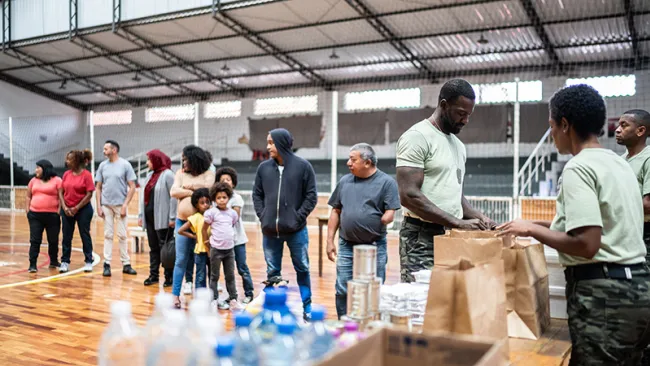If the Federal Public Health Emergency that started during the pandemic ends in early 2023, as expected, health insurers, state-based exchanges, and providers are going to be inundated with inquiries from consumers who are now on Medicaid but will suddenly need to determine Medicaid eligibility and potentially find other coverage quickly.
Health insurance is a confusing topic for most consumers, and this particular redetermination process will likely be especially fraught for the millions of Americans who will suddenly find themselves on the brink of being uninsured. Payers and health exchanges must be ready to deliver knowledgeable, empathetic, and proactive support to meet members’ needs, answer their questions, and get them information fast.
Now is the time for healthcare organizations to make sure they have the people, technology, and strategies in place to meet this impending surge.
Millions will need coverage
The Federal Public Health Emergency (PHE), created by the federal government in response to the Covid-19 pandemic, has brought many benefits. It sped up vaccine development, loosened rules around telehealth and other critical forms of care, and let millions of individuals (many children, in particular) maintain their Medicaid status without having to reapply for it.
There’s no specific date yet as to when the PHE will expire, but the end is imminent. When it does end, between 5 million and 14 million people will learn through Medicaid redetermination that they’re no longer eligible for Medicaid. They’ll then need to quickly find new coverage, likely under Affordable Care Act (ACA) health plans, according to Kaiser Family Foundation estimates.
Think about that for a moment: 5 to 14 million people. That’s a wide-ranging, imprecise number. Companies need to brace for a monumental shift in insurance coverage, which will happen at about the same time across all states and impact some of the most vulnerable populations, and we don’t even have a clear sense of how many people will be affected.
If the healthcare industry is confused about what this all means and how it will play out, how can we expect the impacted population to understand it? As an industry, healthcare organizations need to be ready to help.
President Biden’s administration has said there will be a 60-day advanced notice before the PHE ends, but we know that the healthcare industry doesn’t move quickly and 60 days isn’t nearly enough time to engage Medicaid recipients and educate them about their options going forward.
To reach prospective members effectively, health exchanges and insurers that offer ACA plans will have to conduct targeted outreach to help consumers understand their options. The good news is there are some quickly deployable member activation tools and best practices that can help.
Dive deep into data
A strong data strategy and robust analytics tools are going to be critical. The people who will be affected by the PHE ending are a hard-to-reach population; it’s estimated that less than 25% of them have accurate contact information on file with their Medicaid plan.
What does that mean for healthcare organizations? You’re going to need to leverage third-party data, not only to fill in gaps in contact information but also to create a persona to guide your outreach.
Your outreach sequences will be far more effective – from both cost and efficiency perspectives – if you understand your target personas. You need to know, for instance, not to call a working parent at 11 a.m. or not to call a Gen Z consumer at all (they’ll respond better to text messaging).
All of these valuable persona-related insights are powered by data. Having a strong data strategy will ensure you’re reaching more people, with the right message at the right time, and spurring better outcomes.
Have an omnichannel approach
Even the most relevant, compelling messages are useless if prospective members aren’t receiving them. The only way to reach this demographic is through a strategy that knows and uses each persona’s channel of choice.
Conversational messaging, in particular, should be a growing component of any omnichannel strategy. It’s increasingly become the preferred channel for consumers. Consider this: 65% of consumers want the ability to message with brands (and that jumps to 70% for consumers aged 18 to 34), and 63% of consumers will switch to a company that offers text messaging as a communication channel.
When it comes to healthcare specifically, consumers want to interact with their providers in a growing number of ways: calling or visiting a location and speaking to a person is the most popular option, followed by email, mobile app, online chat, messaging, and others, according to a 2021 survey by Avtex, a TTEC Digital company. The same digital channels that are becoming increasingly popular for provider interactions are channels insurers should be investing in too.
So, this is not just a messaging campaign, or a mail campaign or a call campaign. It needs to leverage all channels to ensure every segment of your target audience is reached. Furthermore, you need to enable easy interaction among all channels, letting consumers move seamlessly between them.
Deliver empathetic, expert support
With all the great benefits technology and automation bring, many healthcare-related interactions still require a human touch. Associates are the frontline of your brand, and they need to be prepared for the unique surge that’s heading their way.
Associates working with people who have lost coverage will need to be empathetic. This is a tense time for prospective members, so associates should be trained in how to handle calls in an authentic and understanding way.
Associates will also need to educate consumers and be able to provide quick answers to questions. For this, they’ll need all relevant information at their fingertips, in a way that’s quick and easy to find. Now’s the time to make sure your knowledgebase and processes are up to the challenge.
And consider this: a great way to engage certain populations is to leverage people from within those populations. Thanks to the many ways work-from-home has revolutionized the contact center industry, it’s easier than ever for companies to hire associates who live in the communities they’ll be servicing.
For the health insurance industry, Medicaid redetermination is the next great challenge on the horizon. With millions of people depending on companies’ engagement strategies, it will be up to organizations to help consumers navigate their options, secure coverage, and continue to manage their healthcare. And to be ready for the coming surge, companies need to invest in member experience tools and strategies now.















